- Hawaii
- Big Island
- Puna region: between ocean and lava flows

The Puna area, located at the eastern end of Big Island, is a land of fire. It is here that one of the most unstable areas of the Hawaiian archipelago can be found: the Lower East Rift zone. Behind this name lies a fault system directly connected to Kilauea.
In this article, we propose to go around the Puna region to discover the volcanic phenomena that have reshaped the landscape of this area that has been scarred by successive eruptions. We will start with the black sand beaches, then the lava flows, without forgetting to stop along the coast to reveal magnificent viewpoints on the Pacific Ocean.
Summary
1Puna: a devastated area in 2018
The news of 2018 has put the Puna region in the spotlight following the impressive volcanic eruption from the Lower East Rift zone, which devastated hundreds of homes, displaced entire populations and reshaped the landscape. Thus, in a few days, about 20 cracks have opened in the residential area of Leilani Estates, the most virulent of which was Fissure 8 (now called Ahu'aila'au).
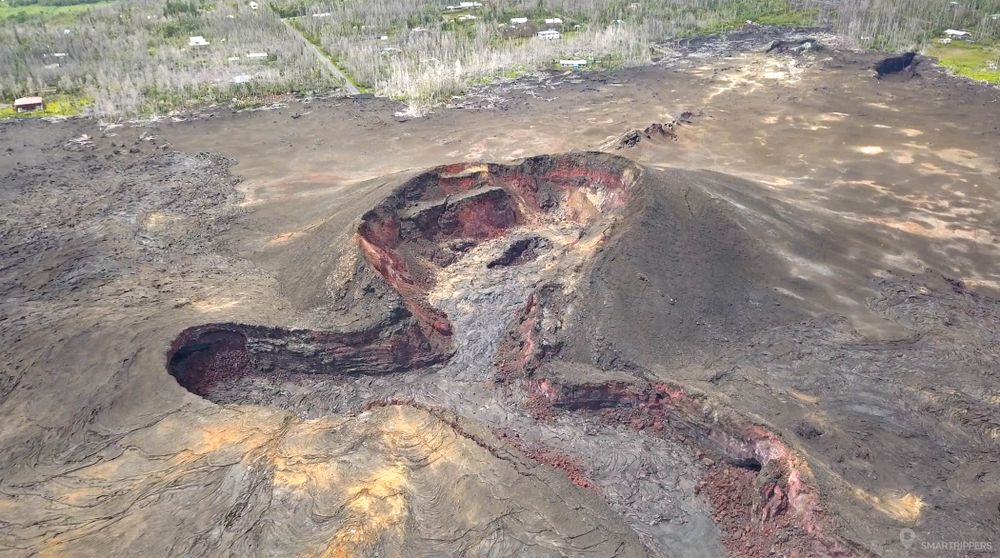
The Puna region was heavily affected by the eruption, which also destroyed several protected areas, such as the Tidepools coral reef near the ancient city of Kapoho. All the stigmata of this recent eruption are still widely visible. We will mention in this article the places now accessible to see the extent of the damage.
2The beaches of the Puna region
The beaches of the Puna region, like most of the points of interest in this article, are located along Highway 137, a beautiful road that is worth the detour and that runs along the steep coast of the island, dotted with lava fields and tropical vegetation. Here one will find only black sand beaches, formed as a result of erosion from successive lava flows. The contrast between the green of the vegetation, the deep blue of the Pacific and the black of the flows is a delight for the eyes!
Kehena Black Sand Beach
Kehena Black Sand Beach (or more locally called Hippie Black Sand Beach, after the people who mainly frequent it) is a pretty black sand beach of about a hundred meters wide, overhung on both sides by old wooded lava flows, and hidden from the road by thick vegetation.
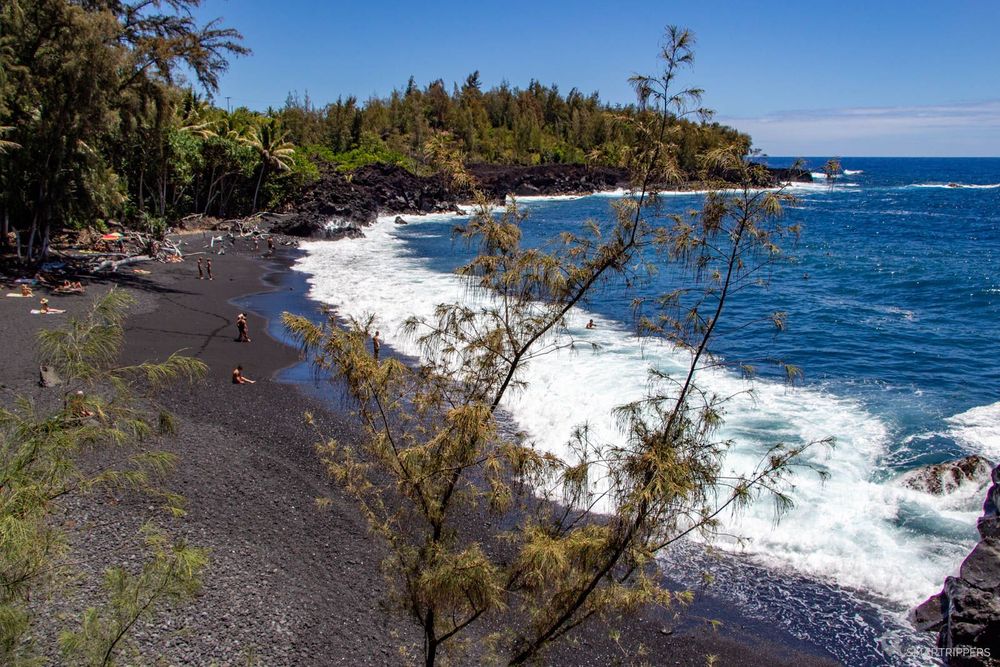
This beach is so well hidden that it has become the favourite place for nudists in the region! Notice to the amateurs!
Here the sea can be very rough, even dangerous, the East of Big Island being swept all year round by a large swell. Swimming is unsupervised, so you will have to be very careful to venture into the water here.
Surprisingly, as you go down to the beach, take a look to your right at the lava flow that overhangs it. You will notice a concrete staircase. In 1979, when a strong earthquake shook the Puna district, Kehena Black Sand Beach collapsed by 91cm/36in. The concrete stairs leading to the beach broke and are now hanging over 3m / 10ft above sea level!
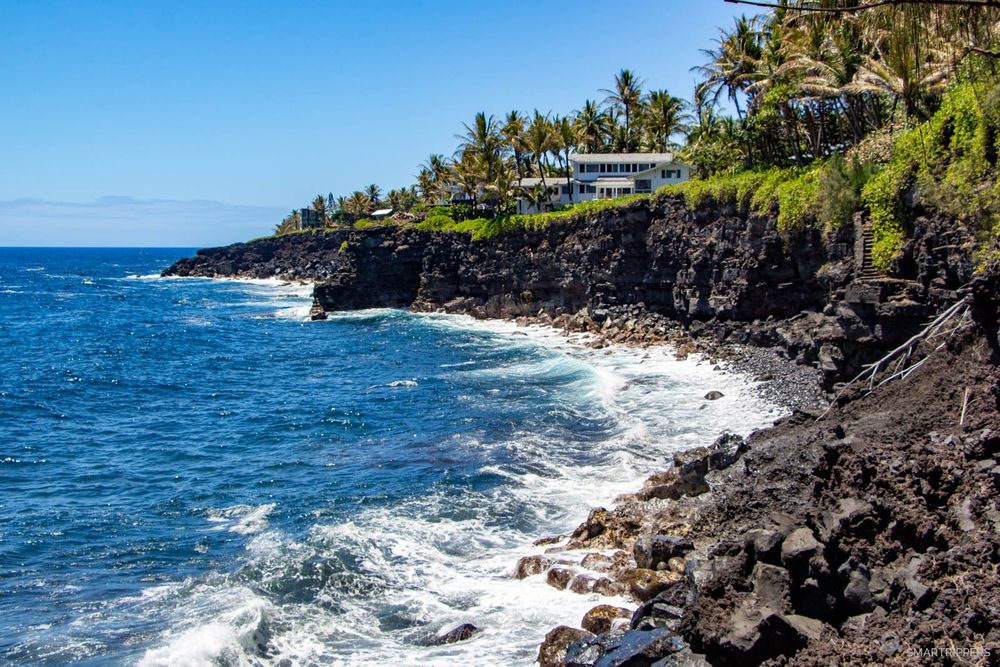
How to get to Kehena Black Sand Beach
On Highway 137, from the intersection with Highway 130 in Kalapana, count 5.3km (3.3 miles) to a parking lot on the right side of the road. This parking lot overlooks the ocean with a parapet. You can park here, or along the road if it is full.
The descent to the beach is on an undergrowth path, the concrete staircase having become obsolete in 1979. So follow the small path that first leads to the lava flow that overlooks the beach. From the lava flow you will then have to descend the steep natural steps to reach the beach. Please note that there are no amenities on site.
Pohoiki Beach - Isaac Hale Beach Park
This small Beach Park was made famous in 2018 when the lava flow from the Lower East Rift zone stopped about 4 meters from the parking lot! It is therefore a very interesting place to admire the lava that fissure 8 poured into the Puna area and that has advanced into the sea, but we will tell you more about it later in the article, because what we are interested in at the moment is the brand new black sand beach of Pohoiki.
As it progressed into the ocean, the lava flow changed the topology of the area that was once a boat launching platform. Today the concrete ramp no longer leads to the ocean, but to a small pond. You have to imagine the place that used to be open to the sea as a small harbour.
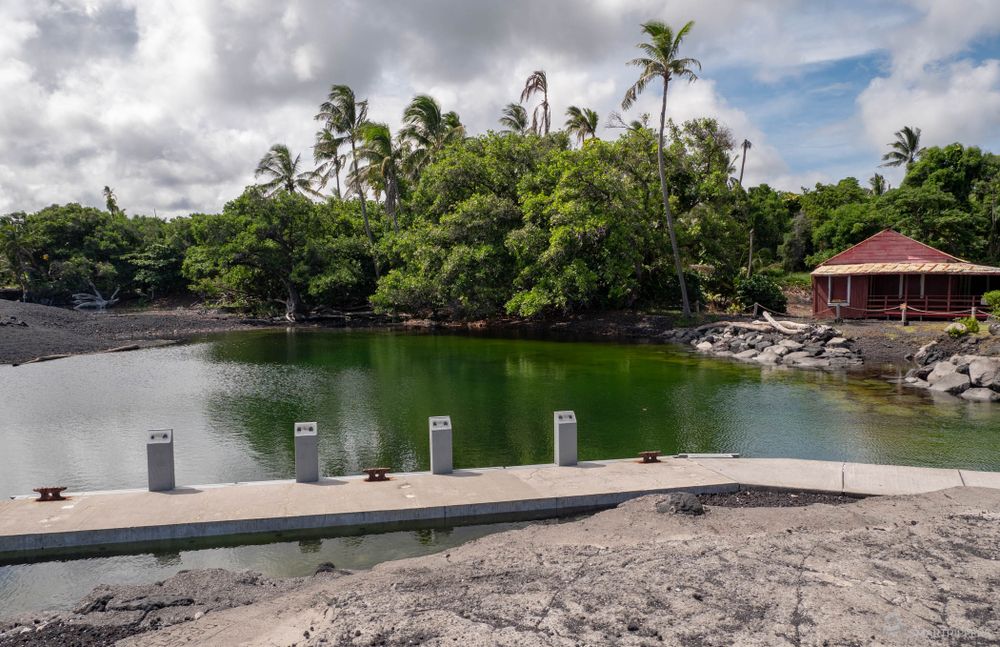
To understand, the flow formed a natural dike of small lava pebbles in just 3 to 4 days, which closed off the area as the flow advanced into the ocean. These small pebbles, which were formed by the liquid lava cooling rapidly on contact with sea water, then mounded with the currents, creating the youngest beach in the archipelago!
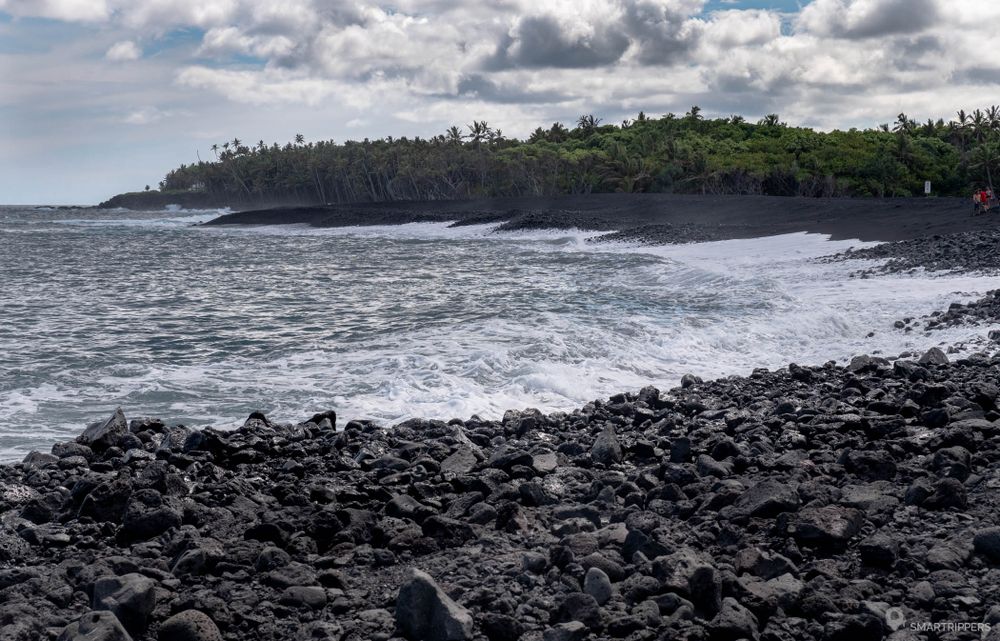
This new beach joins the old one near the MacKenzie State Recreation Area further south and is called Pohoiki Beach. Swimming is possible and two lifeguard cabins have been installed, but be careful with the waves and currents. Picnic tables and restrooms are available on site.
How to get to Pohoiki Beach at Isaac Hale Beach Park
Access is easy, just go as far as you can on Highway 137 to the junction with Pohoiki Road. You will not be able to continue straight ahead, as the lava flow has so far blocked the Highway. At this junction, you will have to turn right to reach the park along the flow on your left until you enter the parking lot. The beach starts at the level of the old quay, on the right of the car park. Do not hesitate to walk a few hundred meters along the waterfront towards the south.
3Approaching the lava flows in the Puna area
Seeing lava fresh from the depths of the earth is unusual! Although liquid lava is no longer visible on Big Island, it is still possible to access the last flow of 2018 in the Puna area. We will see together three points of view that we have retained.
Please note that we will not discuss the viewpoints located in the battered Leilani Estates subdivision, as the influx of onlookers into a residential area is contrary to our principles of never disturbing the locals during our trips, and moreover the area is still subject to restrictions.
Rolling over the lava to see the 2018 flow
Let's stay on Highway 137, between the Mackenzie State Recreation Area and Isaac Hale Beach Park. During the events of 2018, the easternmost cracks poured lava that first reached the ocean by cutting Highway 137 at this location. Later, the very active Fissure 8 took over, pouring lava flows that this time traveled north, engulfing the small town of Kapoho.
Although the Kapoho area is still inaccessible to the public, Highway 137 has been reopened to allow access to Isaac Hale Beach Park. To do this, the road has been rebuilt to its original location, now passing over the new flow.
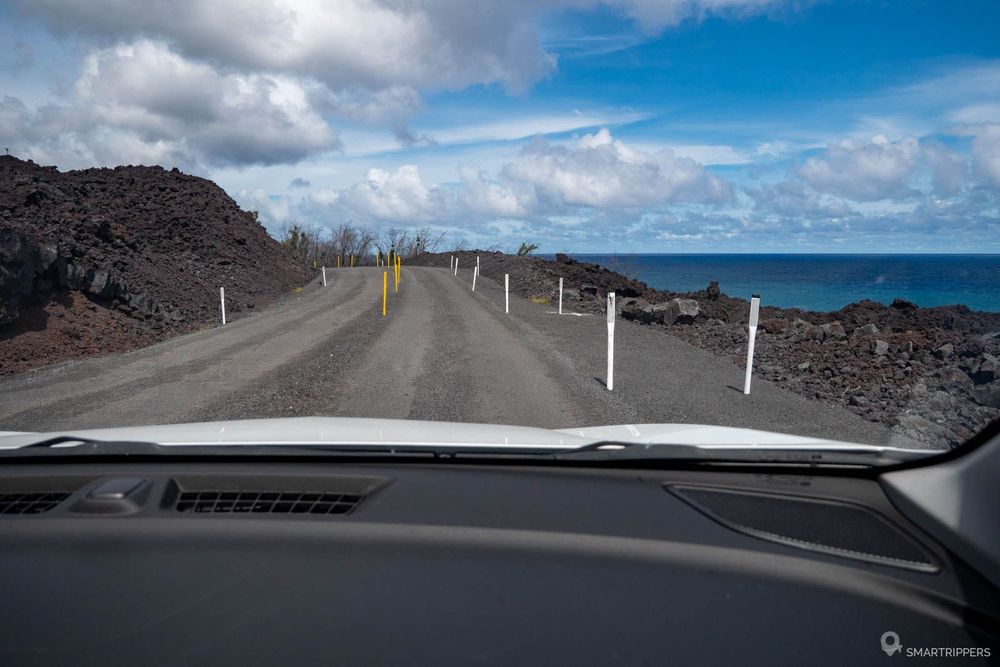
To get there, once you pass the Mackenzie State Recreational Area, it won't take long to see a lava wall in front of you, with a makeshift road built to allow access beyond the lava flows.
It is important to keep in mind that some of the dwellings became isolated after the events we know about. You will be able to measure the magnitude of the forces that generated such flows, which are quite modest compared to those of Fissure 8. The thickness of the lava is impressive, and driving on it with your vehicle is even more impressive.
The surroundings of the flows, of which there are 3, will not allow you to stop and admire the lava field rising up towards the cracks from which these flows escaped. You can still slow down your vehicle on the second flow and take a look inland: you can see in the distance the lava cones generated by the famous cracks!
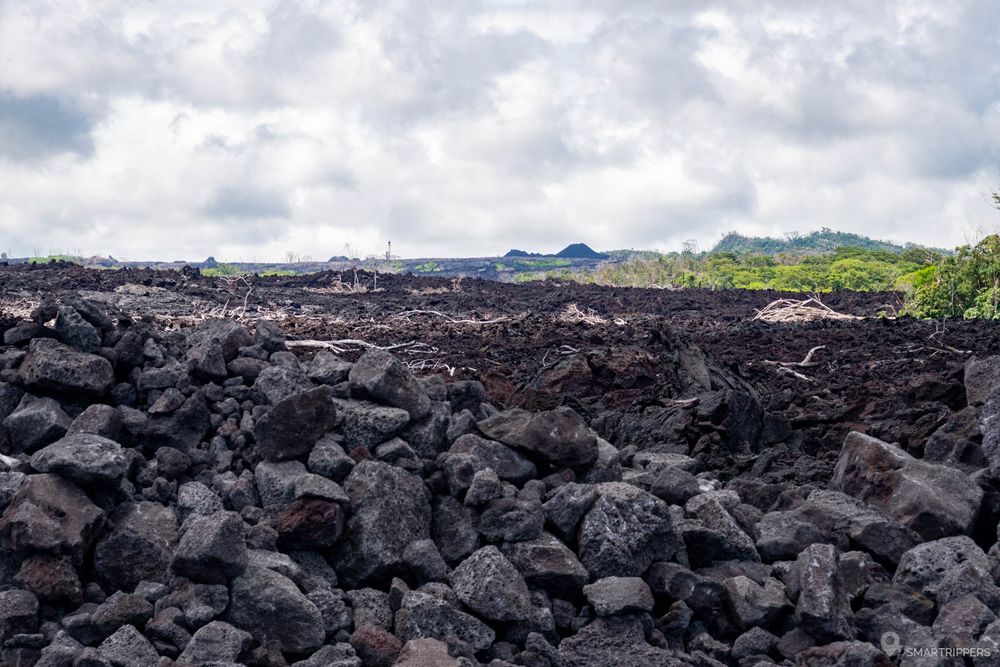
See the 2018 lava flow at Isaac Hale Beach Park
Let's go back to Isaac Hale Beach Park, this time not to swim, but to admire the end of the lava flow generated by Fissure 8.
As said before, the park must be blessed by the gods (Pele in this case) because it was very close to disappearing like the Hot Pond of Ahalanui Beach Park, located a little further east and now buried under several meters of lava.
Here at Isaac Hale, the flow has stopped just a few meters from the park's parking lot.
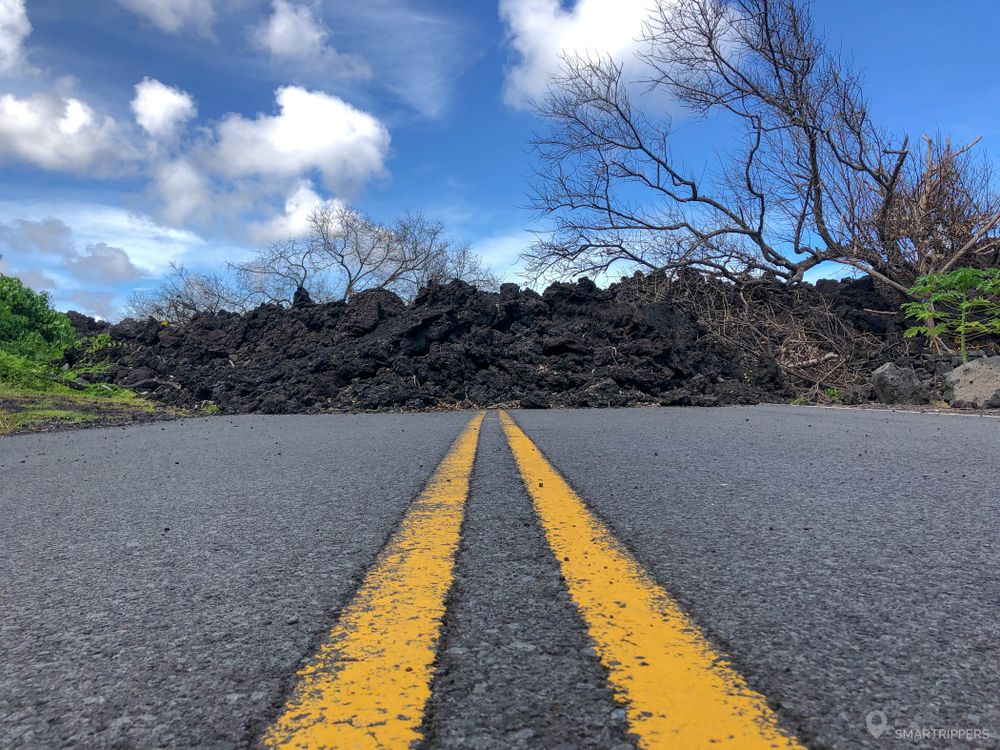
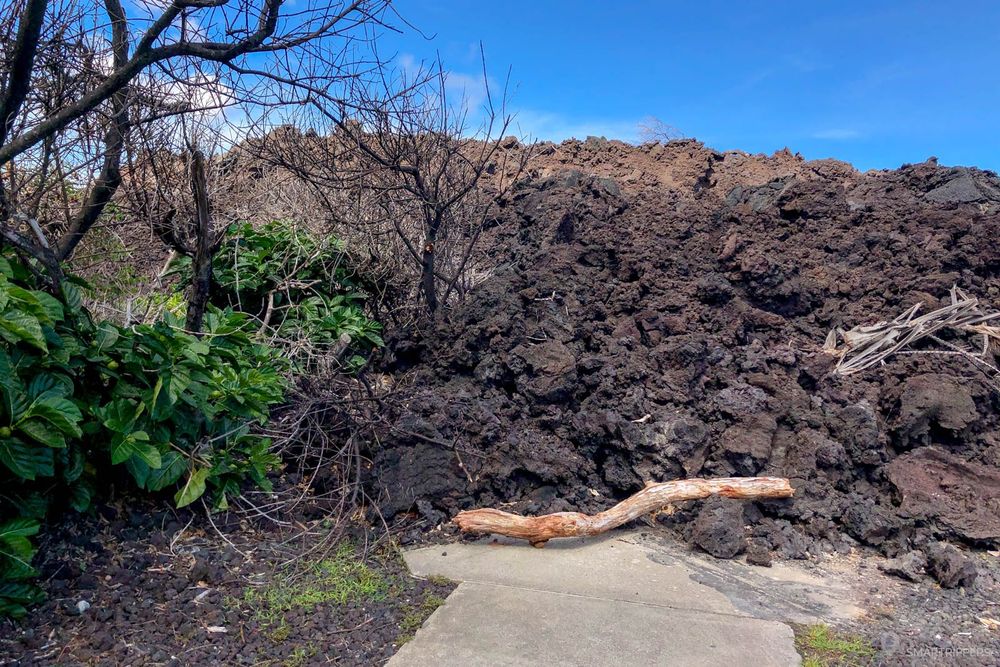
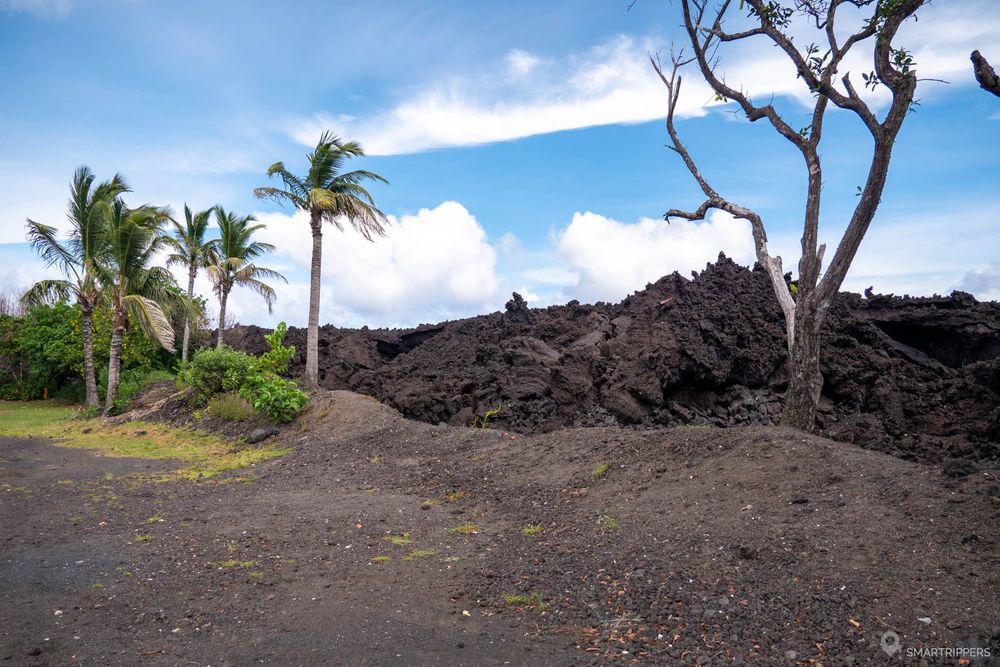
It is thus possible to get very close to it. One could even climb it but the rocks are extremely sharp and the Hawaiians put a sign forbidding access (for them the Pele lava flow, goddess of the volcano, is sacred).
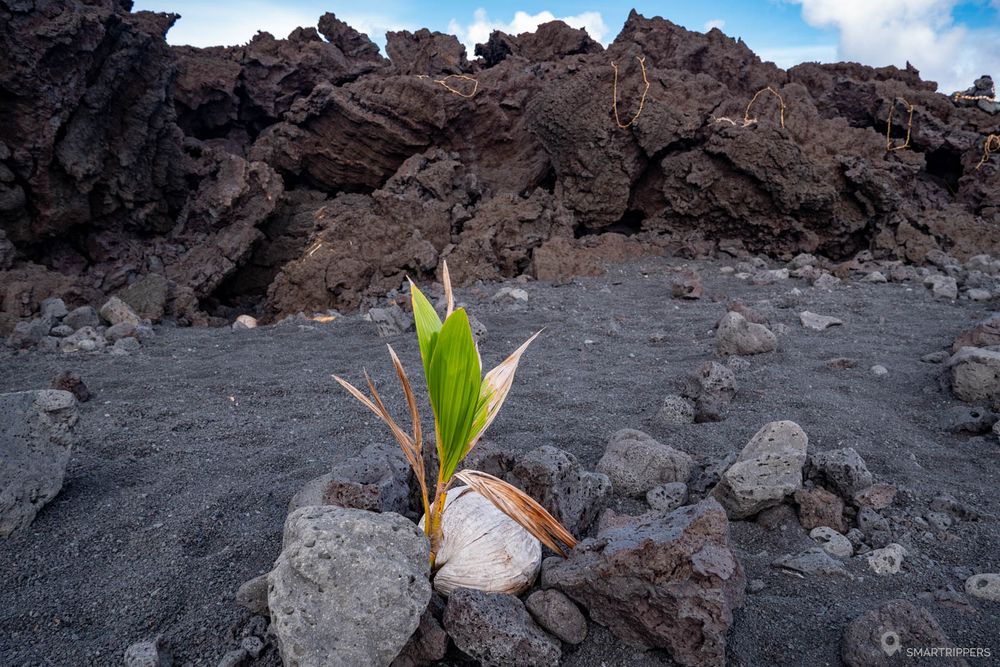
Surprisingly, we still notice water under the rocks that covered the ocean, as if the flow had simply settled flush. This is in fact sea water that has infiltrated through the porous volcanic rocks.
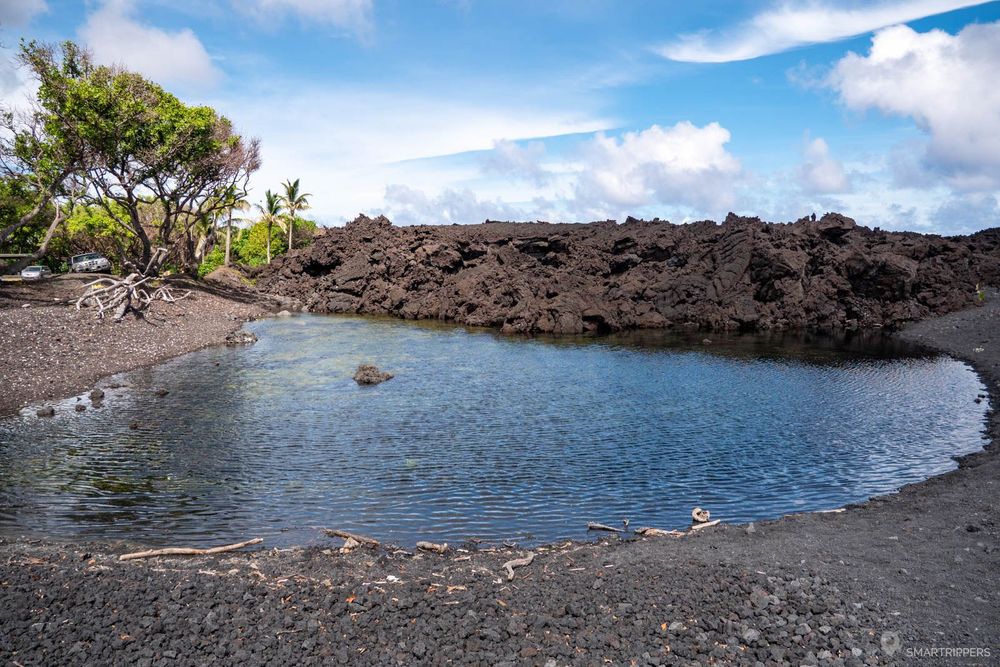
You will be able to walk near this newly formed stream, but you will be asked to respect the place here, as you are entering for the Hawaiians a divine realm, the domain of the goddess Pele. According to Hawaiian beliefs, Pele wanted the lava to come to rest at this particular spot for reasons of her own. This belief should therefore be respected here by not climbing and not degrading the flow, even to bring a piece of lava home.
See the flow near the Lava Tree State Monument
North of the 2018 flow, you will be able to stop to admire the lava not far from the Lava Tree State Monument, which we recommend you to visit. Here the road has been literally covered by a 10 metre / 30 feet layer of lava! This is quite impressive, considering that the road, now cut off, was slightly downhill at this point.
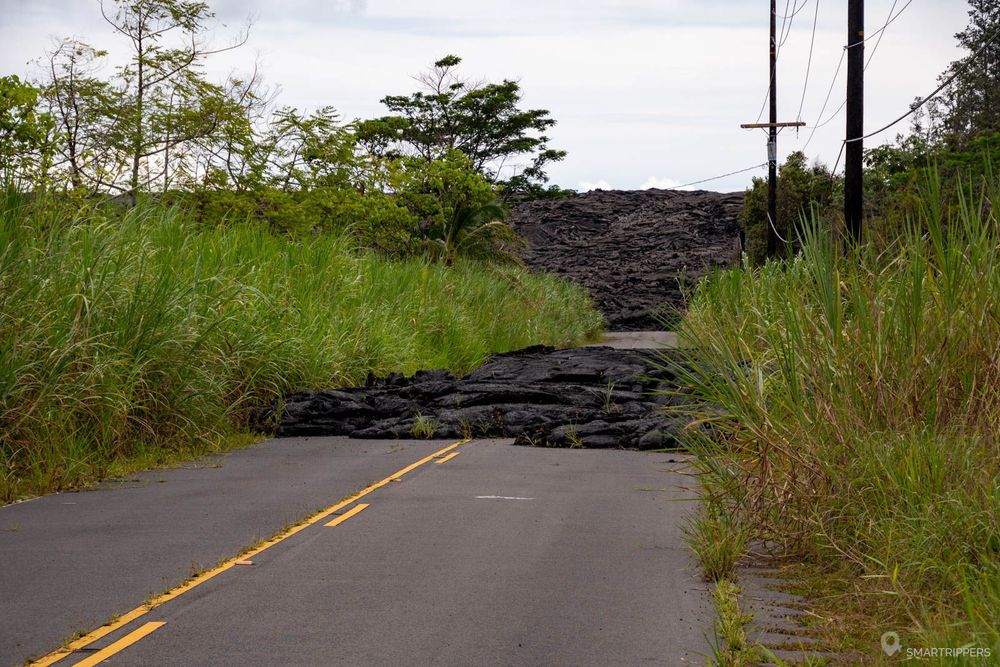
Instead of the road, we now find what formed during the events of 2018, the lava channel that led the spillway from Fissure 8 to the ocean through the northeast, circling the Kapoho Crater and finishing its course from Kapoho Bay to Isaac Hale Beach Park.
The route is now blocked with a formal prohibition to approach the area which is still under high surveillance as it is close to the cracks. Imagine here a small quiet residential area that has been transformed into a lava field in just a few days!
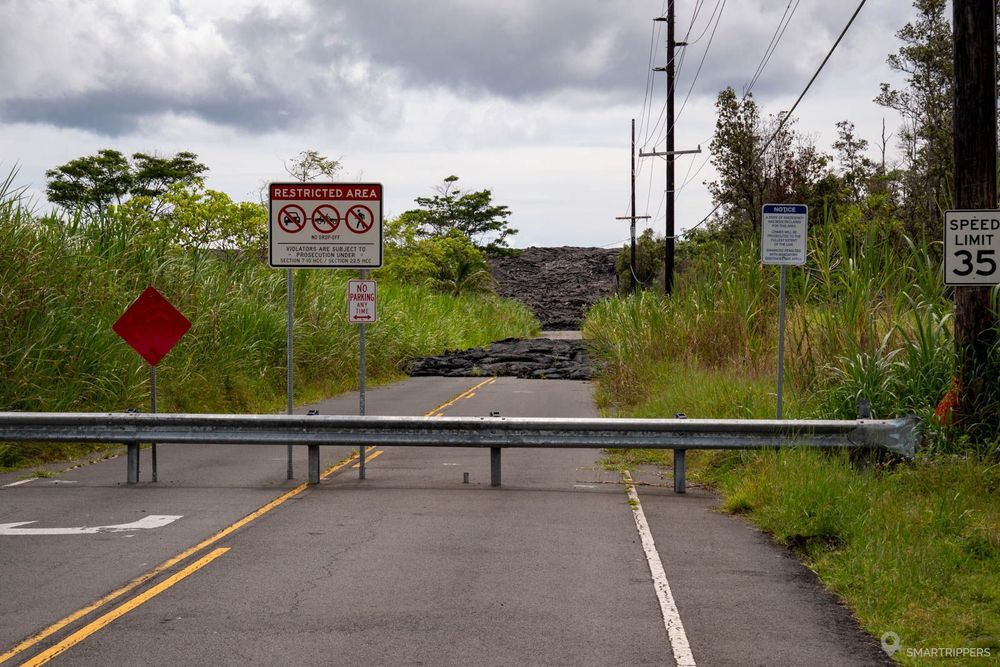
Look at the height of the flow! To have been there 2 years ago, it was very strange for us.
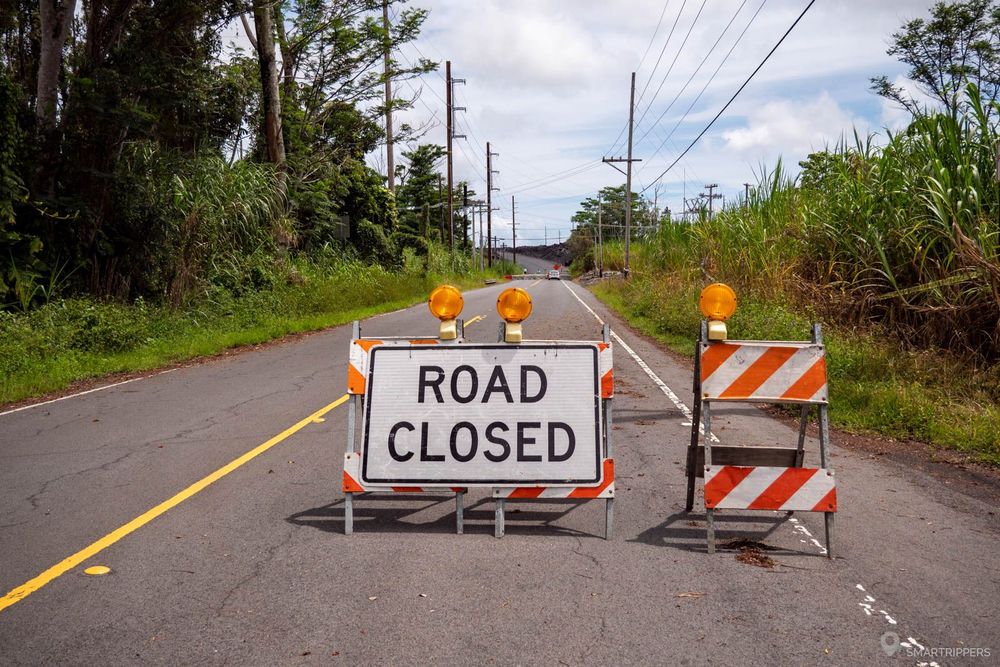
To get there, you will have to come from the north on Highway 130, then turn off at Pahoa on Highway 132. After 4 km (2.5 miles), just past the Lava Tree State Monument, you will reach the junction with Pohoiki Road, Highway 132 turning left and then being cut off to access the PGV (Puna Geothermal Venture). It is on Pohoiki Road that the lava wall is located.
Once there, it is impossible to miss it, the road is blocked by a guardrail and signs are there to forbid you to park, to cross the guardrail on foot, to be dropped off... it will be a question here of making only one express stop the time to make one or two photos.
4Other visits to be made in the Puna region
Let's continue this article with other equally exciting places to discover, always in close relation with the strong volcanic activity of the region.
Lava Tree State Monument
The Lava Tree State Monument is a small park that was spared the 2018 flows that stopped at 140 meters / 150 yards to be precise! The park can be discovered by following a small loop of about 900 meters / 0.6 miles relatively flat that allows you to admire ancient tree casts shaped by the lava.
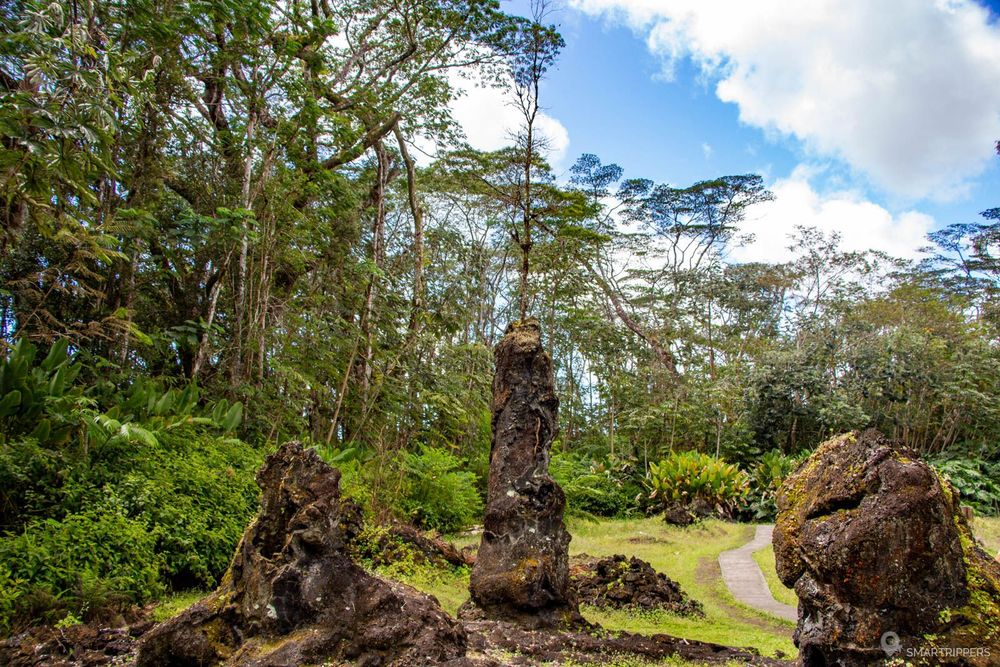
A small explanation is necessary to better understand why this small park is exceptional. The Hawaiian hot spot lava that is currently emerging from the depths of Kilauea is very special. So special that two types of lava have a Hawaiian name: lava 'A 'ā and lava pāhoehoe. It is the latter that interests us here. Without going into too many technical details, the lava pāhoehoe is viscous and forms drapes or ropes in an arc of a circle, you will come across it everywhere in the archipelago.
In the 17th or 18th century, a Kilauea flow broke east of Big Island to extend the island's surface area a little more. At that time, this area was lush and the forest was dense. As the flow passes by, the lava not only burns everything in its path, but also curls up around the trees to conform to their shapes. The viscosity of the lava causes it to congeal on contact with the trees, carbonizing them and causing them to go up in smoke, but leaving lava moulds around them, corresponding to the maximum height of the flow. It is these moulds that can be seen in this park. Incredible, isn't it?

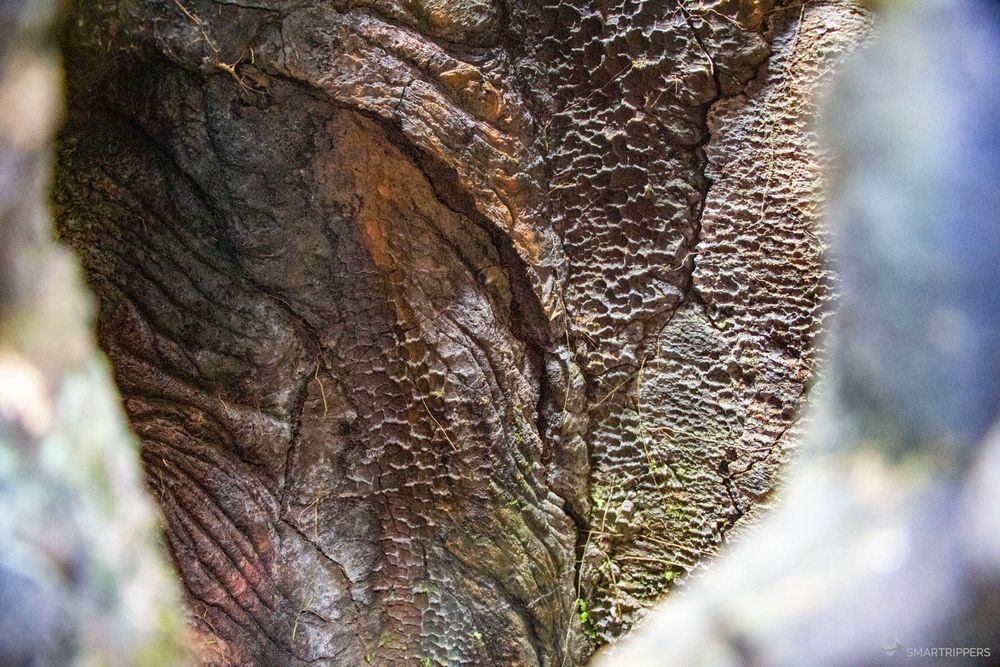
How to get to the Lava Tree State Monument
Access to the park is easy. From Highway 11 which joins the Volcanoes National Park in Hilo, take Highway 130 which descends to Kea'Au. 20 minutes and 18.6 km (11.6 miles) later, turn left onto Highway 132 which will take you to the State Monument after 4 km (2.5 miles) on the left. A small wooden sign will indicate the location of the park and its concrete parking lot. Access is free.
Driving the Kaimu - Chain of Craters Road from Kalapana
The Kaimu - Chain of Craters Road is the eastern part of the famous Chain of Craters Road which starts at the Devastation Trail in the Volcanoes National Park. This road led until 1959 to the small town of Kalapana. That year Kilauea erupted and lava flows began to cover the road.
Year after year the flows followed one another, forming a huge lava field all the way to the ocean. In 1990, a devastating eruption swallowed up part of the town of Kalapana, the stigmata of which remain to this day. A few brave owners rebuilt their houses on the lava field, which the vegetation is slowly beginning to recolonize.
Despite the activity in the area, the Kaimu - Chain of Craters Road continued to be maintained to become an escape route in case of evacuation to the west, should a large rapid eruption devastate the area as it nearly did in 2018.
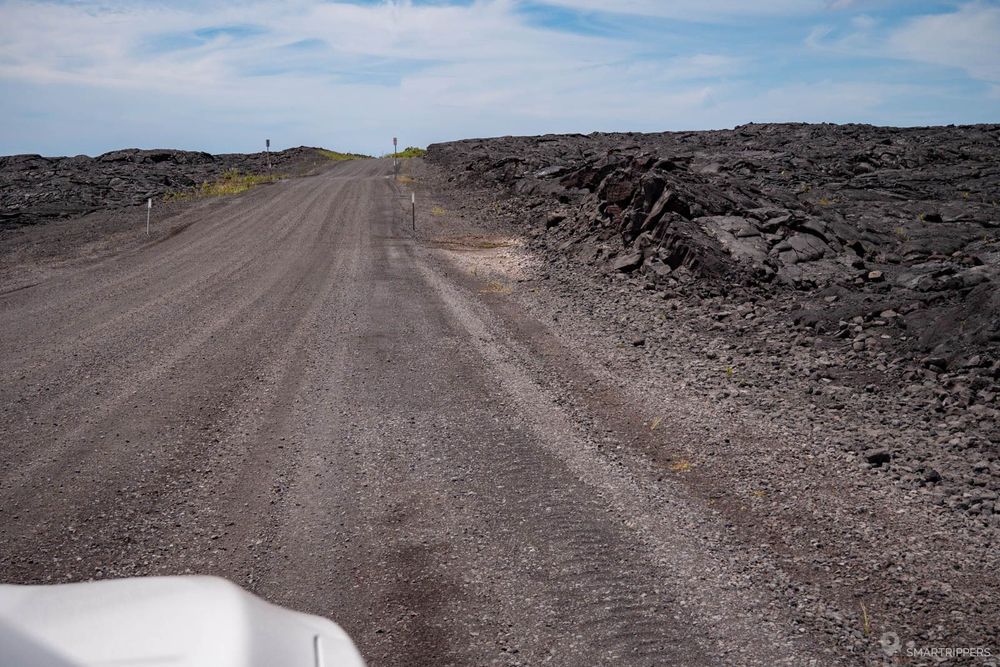
This road was also until 2018 the pedestrian access to go and admire the lava flow coming from the eruptive mouth of Pu 'u 'Ō 'ō, coming in contact with the Pacific Ocean. An extraordinary spectacle that unfortunately is no longer possible to contemplate at the time of writing. But we are not safe from the possibility that this phenomenon will start again one day...
Now that the lava no longer flows towards the ocean, access to the lava field has been reopened to vehicles from Kalapana. From now on, we will come there only to go and see this huge recent lava field (where the lava was still flowing in 2018) and where are scattered here and there some makeshift houses rebuilt by the inhabitants of Kalapana.
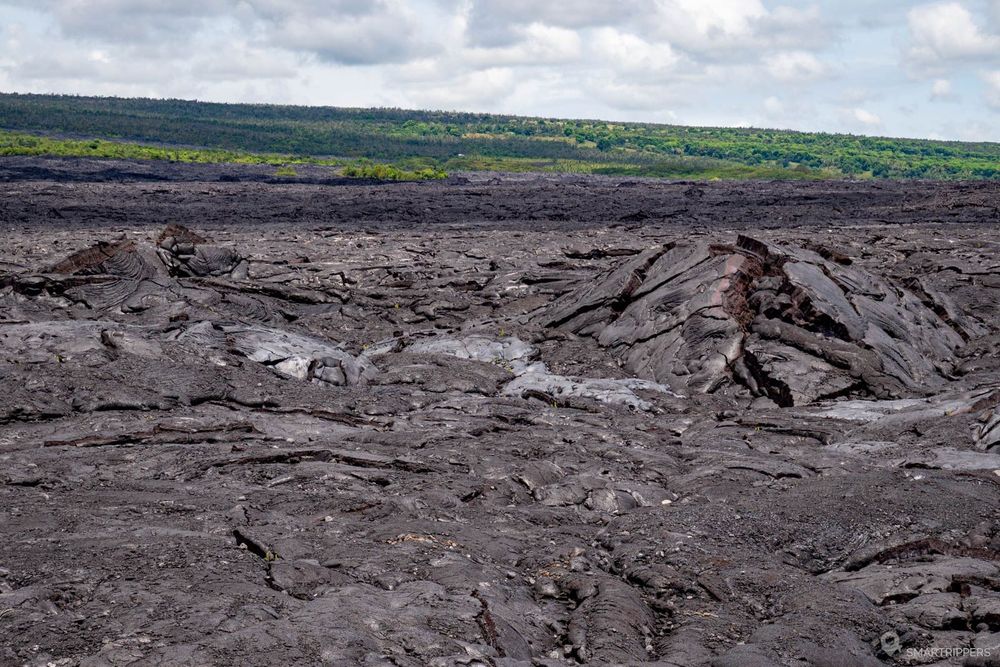
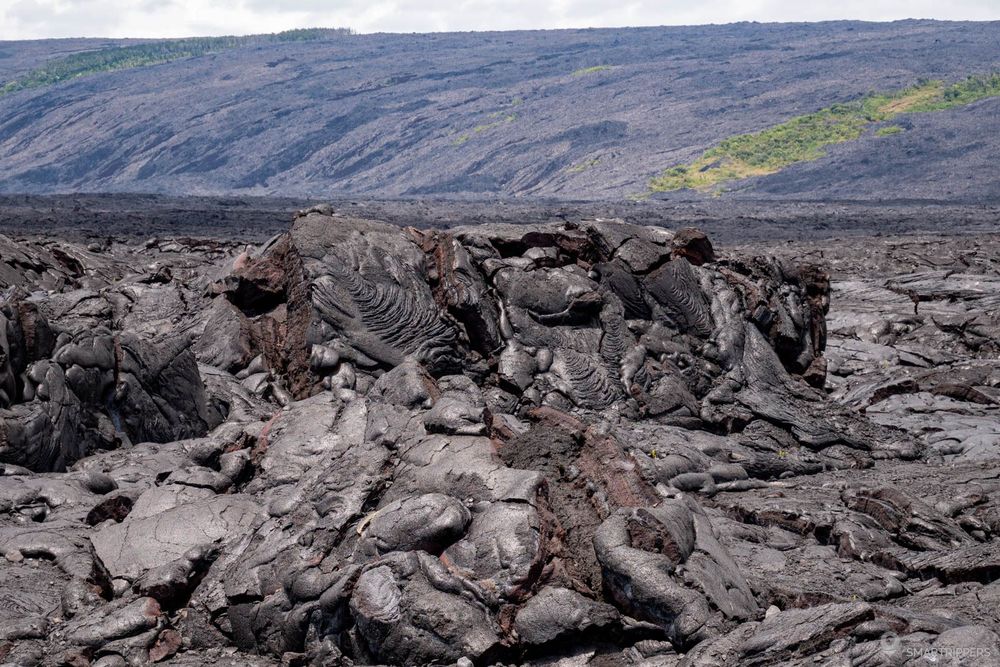
After driving for only a few hundred meters, you will be stopped by a barrier in the area where lava once flowed into the ocean. The road is still cut off, so you will have to turn back.
How to get to the Kaimu - Chain of Craters Road
Getting here will be child's play. From Highway 11, head south toward Kalapana on Highway 130, which you will stay on all the way to the end, the Chain of Craters Road being the continuation of Highway 130.
Highway 137
Even if Highway 137 no longer leads to Kapoho and ends in a dead end, it would be a shame to miss such a beautiful road! The road runs along the ocean and offers beautiful views of the steep coastline where ancient coulees flow into the sea.
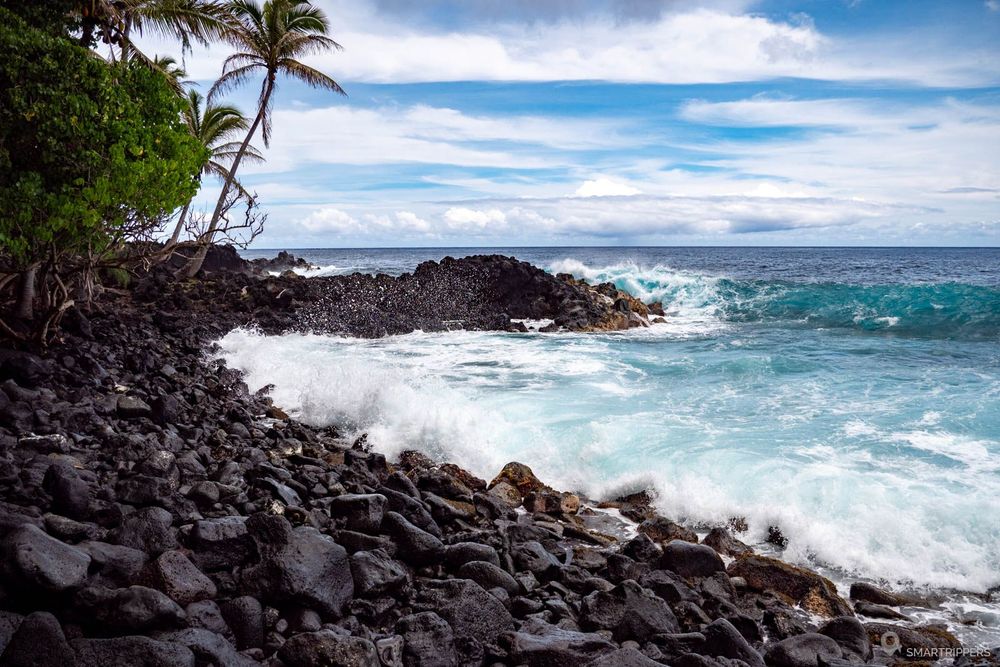
Feel free to stop whenever you like for a photo stop or just watch the waves crashing when the sea is rough. You can also easily spot turtles here.
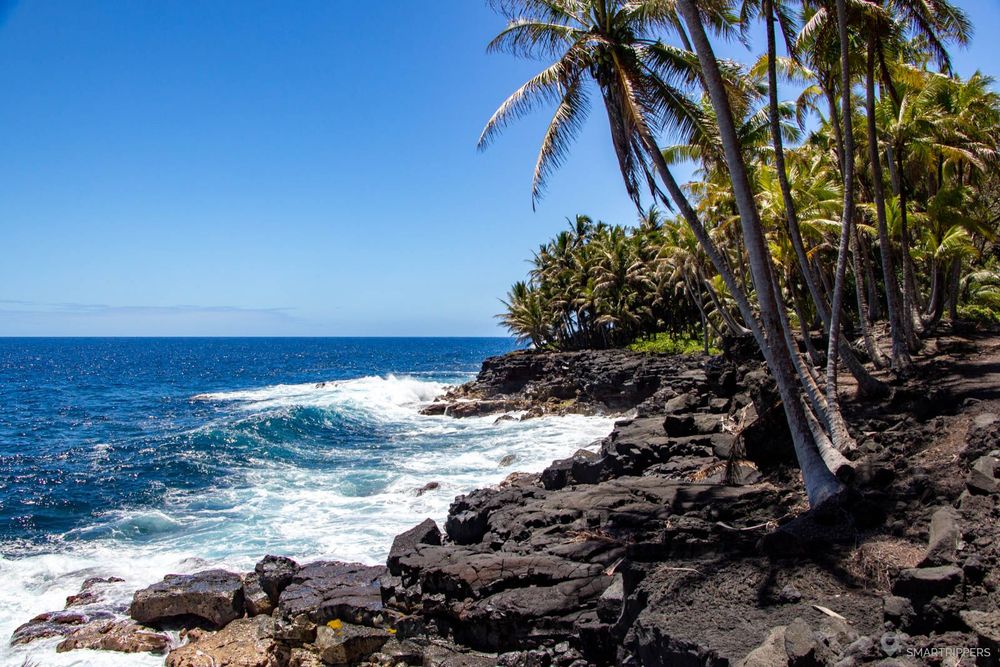
Also take the time to enjoy this route that follows the topology of the lava flows, and be amazed by the tunnels of vegetation that naturally form above the road as the trees touch and intermingle. It is really charming especially when the sun disappears under the foliage.
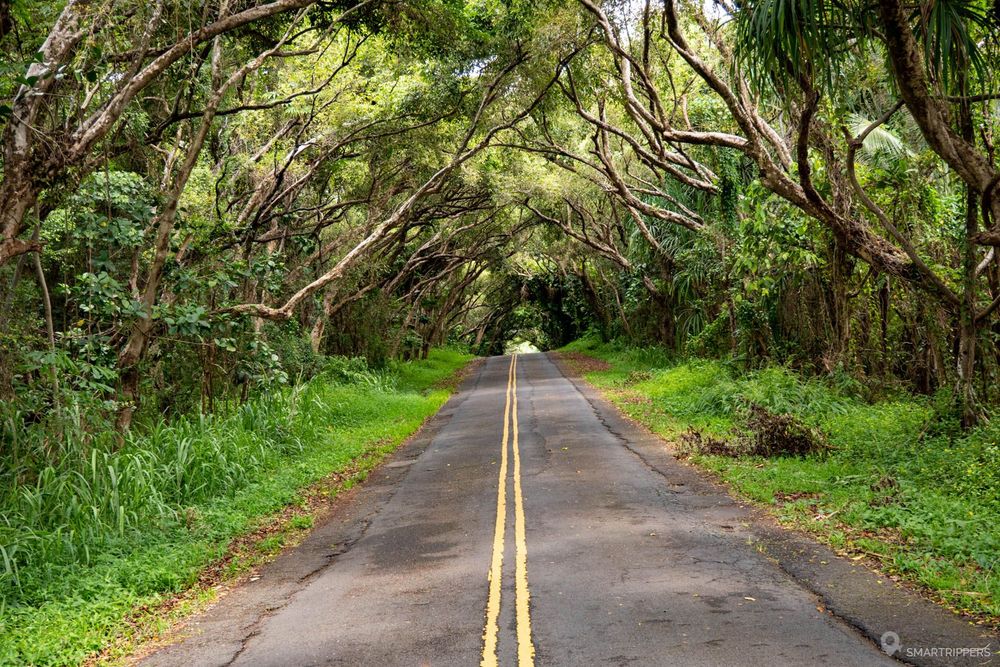
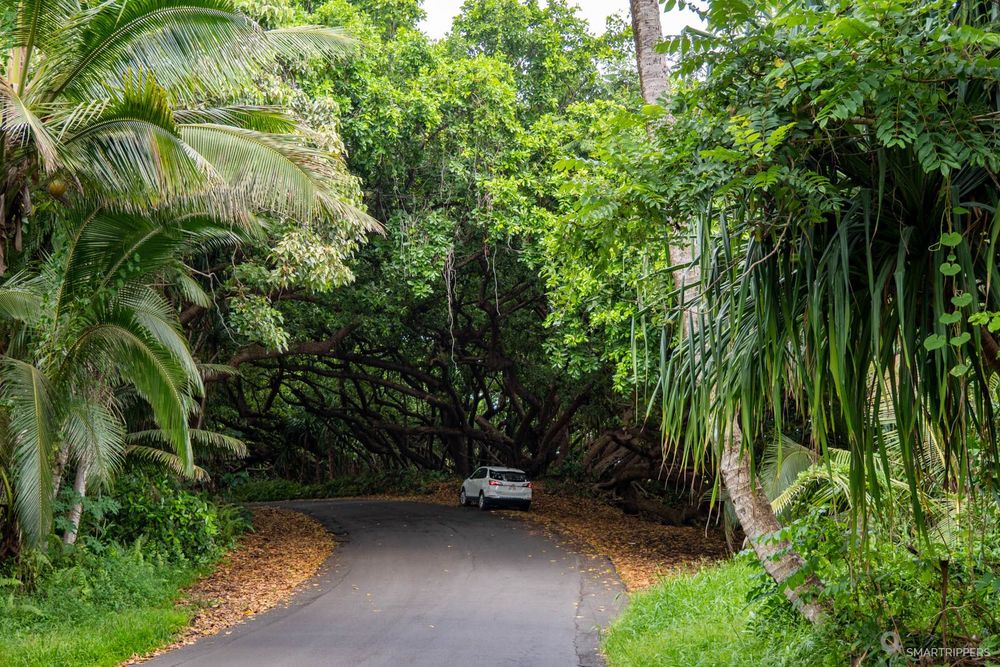
MacKenzie State Recreation Area
Just barely spared by the lava flows of 2018, the MacKenzie State Recreation Area is a peaceful place to stop for a few moments under the pines and enjoy the ocean view.
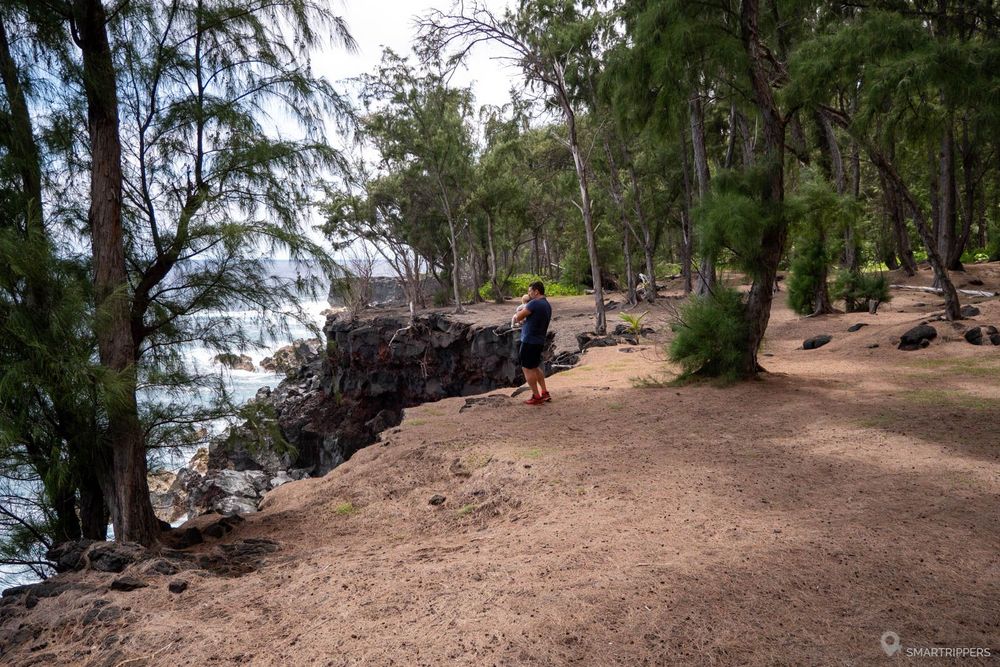
If the latter is agitated you will see the waves crashing at the foot of the basalt cliffs that are gradually crumbling, nibbling away at the force of the water.
Be careful not to get too close to the edge, parts of the cliffs can collapse at any time! This is evidenced by the numerous cracks in the ground not far from the cliffs.
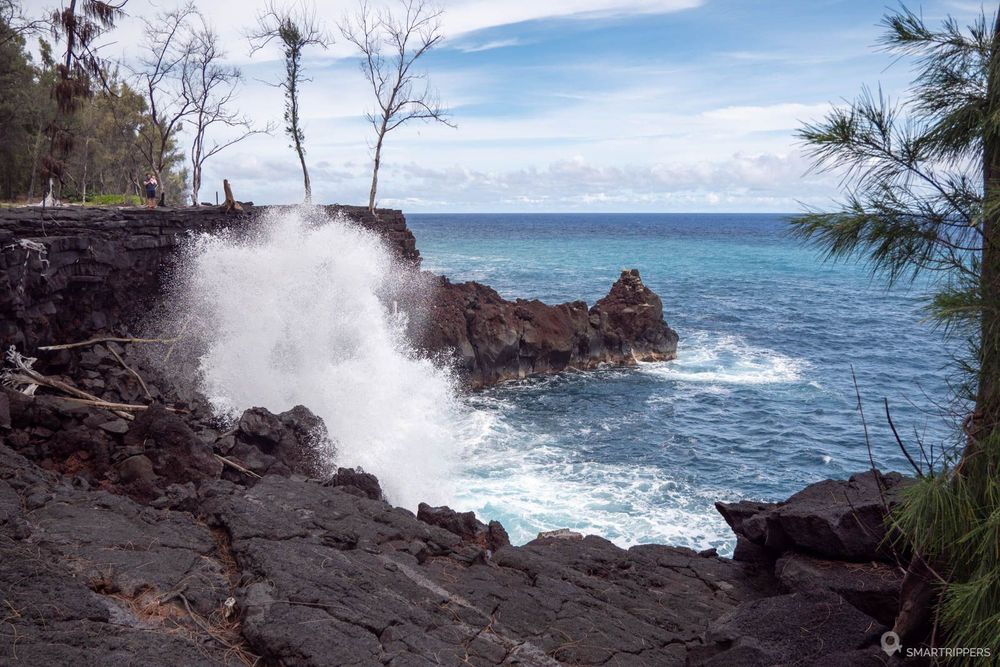
Feel free to take a walk along the coast. You may discover some lava caves. The area is equipped with a few picnic tables and dry toilets. There is no water and little GSM coverage.
How to get to the Mackenzie State Recreation Area
On the beautiful Highway 137, from the intersection with the Pahoa Kalapana Road in Kalapana, count about 20 minutes to cover the 14 km (8.7 miles) without stopping (it will be difficult!). The park is on your right. If you are facing the 2018 coulees, you are 500 meters too far!
This is the end of our article on the Puna region, which is worth discovering during a stay near Hilo. Easily accessible, a big day will be necessary to get a good overview of Puna with its varied landscapes and numerous volcanic phenomena.
We are Sandrine and Flo, French thirty-somethings. In 2019 we quit everything to live our dream, become nomads and travel around the world. We left with our baby, Lena, who was only 5 months old at the time. After a first trip around the Pacific Ocean by plane and a long 3 months stay in Hawaii, we left to discover Iceland for 3 months on board our 4WD pickup truck and truck camper. Then we continued our adventure in North America.
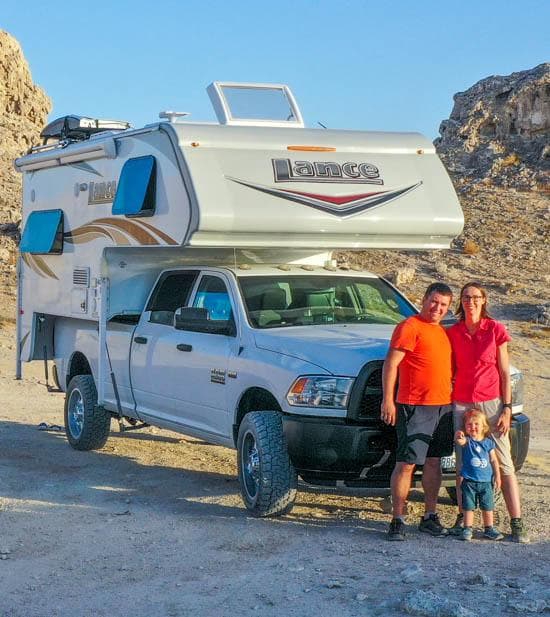
Today, if we can continue this adventure, it is above all thanks to our blog, Smartrippers! We created it one day in 2016, with the desire to share our good travel tips, without thinking that it would lead us there! We have developed it a lot over the years and have become experts on our 3 favorite destinations: Hawaii, Iceland and the American West. We now guide you to these destinations to help you plan the trip of your dreams!
Follow our adventures!